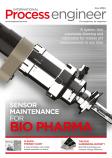New IR technology boosts detection and prevention of methane leaks in increasingly regulated industries.
Early leak detection at industrial plants is essential for protecting plant and personnel from the risks of flammable gas. Methane is one of the most potentially harmful of these; not only can it form explosive mixtures with air, but it can also prove extremely toxic to humans and the environment.
Regulations have become increasingly stringent across sectors. As such, in oil and gas, for example, almost 80 companies, representing 30% of the world’s oil and gas production, have joined the Oil and Gas Methane Partnership 2.0 (OGMP), a comprehensive, framework to improve the accuracy and transparency of methane emissions reporting in the sector.
These companies and those from other sectors, including breweries, automotive environments, waste control centres, multi-storey car parks, chilled plant rooms, packaging, manufacturing or petrochemical processes, are increasingly choosing to deploy highly sensitive gas monitors designed to alert workers to potential dangers including toxic gas exposure, gas leaks, rising carbon monoxide levels, oxygen depletion/enrichment or an explosive risk caused by the presence of combustible gases.
OLCT 100 Solution from Teledyne
To help clients from all sectors abide by regulations, longstanding manufacturer of fixed and portable gas and flame detection solutions Teledyne recently released an updated version of its OLCT 100 flagship detector – a fixed solution now featuring an infrared sensor for methane detection. The updated detector will be particularly suited to the industrial utility and laboratory sectors and their needs for enhanced measurement stability as a result of lower alarm thresholds.
Investing in IR technology is cost effective when considering factors such as total cost of ownership (TCO), especially in environments when gases such as methane are present.
Why infrared?
In such applications, IR technology outperforms catalytic oxidation, a traditional detection method, since the latter typically requires recurring sensor replacements and frequent calibration. By contrast, the IR sensor ensures measurement stability and is unaffected by catalytic poisons. Moreover, the solution offers a long lifespan, even with the presence of background gas.
Infrared sensors can rapidly scan broad sections of equipment and survey areas that are hard to reach with traditional contact measurement tools. For instance, a major share of high-quantity methane emissions comes from difficult-to-access pipeline sites, but IR sensors can easily measure around infrastructure.
How the sensor works
The sensor deploys two wavelengths of IR energy - one active wavelength for gas absorption and one that provides a reference wavelength to compensate for the impact of temperature and humidity. As IR sensors do not require oxygen to operate, they can also be used in 0-100% by volume methane gas environments.
The OLCT 100 is ATEX-approved and comes with 4-20mA output means it is reliably safe and effective, according to the company.


















